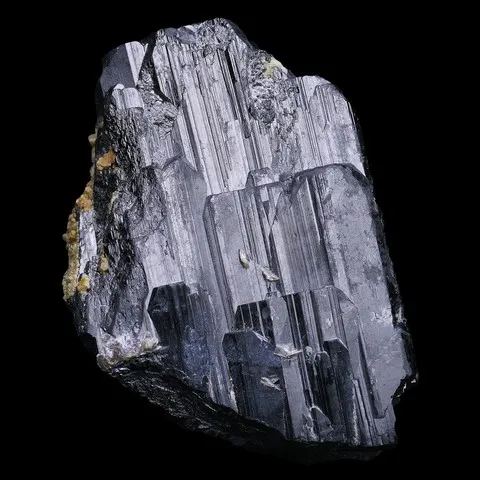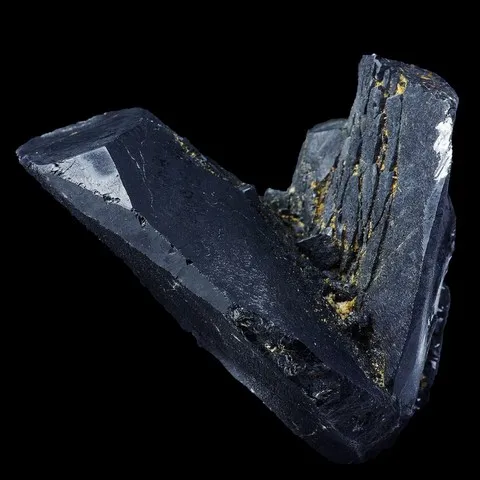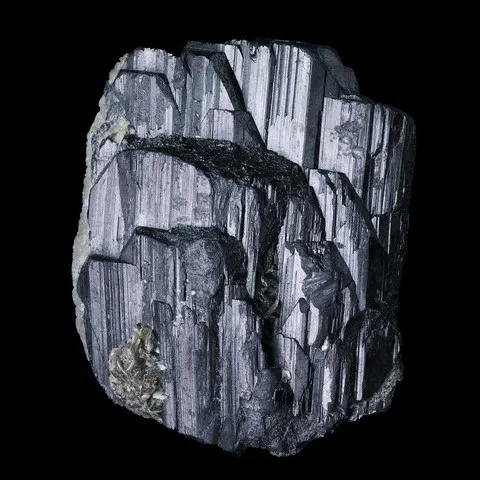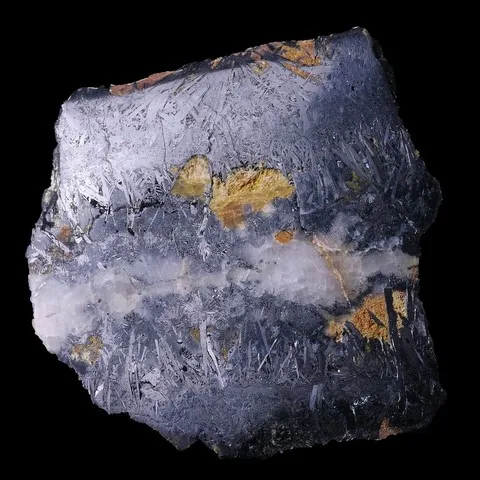WOLFRAMITE
Class : Sulfates, chromates, molybdates
Subclass : Tungstates
Crystal system : Monoclinic
Chemistry : (Fe2+,Mn2+)WO4
Rarity : Quite common
Wolframite is the general term for the continuous solid solution ranging from hubnerite (MnWO4) to ferberite (FeWO4), although some authors restrict this name to most of the solid solution (between 20% and 80 % substitution of iron by manganese and vice versa). In the absence of precise analysis allowing to differentiate these two minerals, the term of wolframite is always used. It owes its name to the wolfram it contains (French and German terms for tungsten). The minerals of the wolframite group form prismatic lamellar crystals, more rarely flat needles united in sheaves, usually black in color, sometimes reddish-brown (hubnerite), of high density (greater than 7), present in pneumatolytic mineralization and the high temperature quartz veins around the granites. They are relatively alterable and do not keep well in alluvium. Wolframite is, in the broadest sense, the most important tungsten ore.
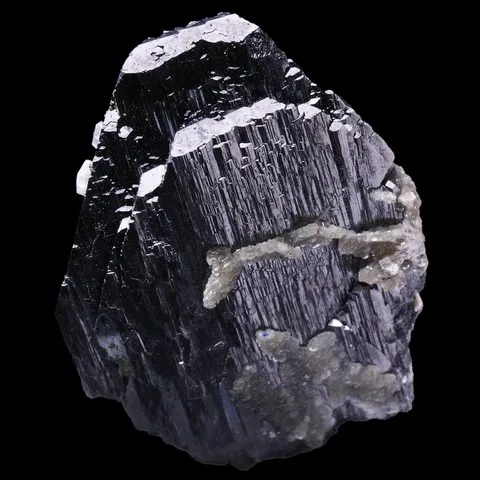
Wolframite in the World
Hubnerite : the most beautiful groups are Peruvian and come from the Pasto Bueno and Mondo Nuevo deposits. They are elongated tabular crystals exceeding 15 cm, translucent, of deep red colors, implanted on prismatic quartz crystals. The Japanese mine of Kurasawa (Honshû) also supplied superb large crystals, as well as the Brazilian deposit of Lovra de Cobra, and some mines of Colorado (Sweet Home, Silverton).
Wolframite in France
Ferberite : in France, the deposits of Puy-les-Vignes (Haute-Vienne), Montbelleux (Ille-et-Vilaine) and Leucamp (Cantal) produced large decimetric blades (more than 50 cm in Puy-les-Vignes).
Hubnerite : in France, hubnerite is present in centimetric crystals in the kaolin quarries of Echassières (Les Montmins and Le Mazet).
Twinning and special crystallization
The wolframite can transformed the scheelite at high temperature, it then retains the octahedral shape of the scheelite. This wolframite pseudomorph after scheelite is known as "reinite".
Twins are common on {100}, rarer on {001}.
Fakes and treatments
No scam known for this mineral.
Hardness : 4 to 4,5
Density : 7.12 to 7.58
Fracture : Irregular to sub-conchoidal
Streak : Brown, black, red
TP : Opaque to transparent
RI : 2.170 to 2.414
Birefringence : 0.130 to 0.159
Optical character : Biaxial +
Pleochroism : Visible
Fluorescence : None
Solubility : Phosphoric acid
Magnetism : Paramagnetic
Radioactivity : None

